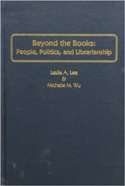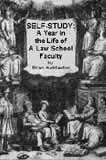And so this student was checking all the citations for the article and was looking up 46 USC §688 and couldn’t find it. That’s because, as of October 2006, the Jones Act was amended and re-codified as part of the entire revision of Title 46. What used to be §688 is now found in §§ 30104 and 30105 of Title 46. But because the United States Code itself is only re-published every six years and the feds are still in the process of issuing the 2006 edition, this re-codification is not in the U.S.C. but can be found in the U.S.C.A and U.S.C.S. (the two commercial and non-official editions of the code).
The student was very conscientious and wanted to find out the best way to indicate that the law had been re-codified, so that all the old-timers who see this article and don’t see their familiar “46 U.S.C. §688” will understand that this provision is now in two new sections. But the Bluebook isn’t clear on this, and as I told the student, its not really a question of citation format, but one of style. The Bluebook doesn’t require authors to note when a law has been re-codified, it just requires them to cite the current law. So because it would really be only a courtesy to readers to note this, I told the student that perhaps a parenthetical statement noting this fact would be appropriate. (And, since the author of this article has passed away since he drafted it, the journal staff has a bit more leeway in adding things like this than they normally do.)
And, like I often do when helping students with citation quandries such as this, I suggested we look and see how other law reviews have treated this situation. For example:
“...the Jones Act [46 U.S.C. §30104, (formerly §688(a))]...”But for every good application of citation rules to an unclear situation like this, there are citations like this:
David W. Robertson, The Outer Continental Shelf Lands Sct's Provisions on Jurisdiction, Remedies, and Choice of Law: Correcting the Fifth Circuit's Mistakes, 38 J. Mar. L. & Com. 487 n 161 (2007)
“...[t]he Jones Act also allows injured sailors and the next of kin of deceased sailors to obtain damages from their employers for the negligence of the shipowner, the captain, or fellow members of the crew. See 46 U.S.C. § 30104 (2000)...”No, no, NO! Bad law student, bad, bad law student! ... What happened here is that the student editor probably saw that the current Jones Act has indeed been re-codified at §30104 of Title 46 of the United States Code. But that codification has only been published in the U.S.C.A. and the U.S.C.S. and NOT in the U.S.C. The purpose of citing all this stuff in such detail is, in part, to guide the reader to where the resource the author is citing can be found. And readers are going to be perplexed when they go to the 2000 edition of Title 46 of the U.S.C. and DON'T FIND a section 40103.
Bin Wang, All Bark and No Bite: A Modern Evidentiary Argument for the Retirement of the Age-Old Pennsylvania Rule, 49 Wm. & Mary L. Rev. 2309, 2329, n. 121 (2008)
The Bluebook does NOT require citation to the U.S.C. in all instances. Rule 12.2.1 says “If possible, cite statutes currently in force to the current official code or its supplement” ... “[o]therwise cite a current unofficial code”. So in this instance citing to the U.S.C.A. would have been entirely appropriate as its impossible to cite the statute currently in force - the revised and re-codified Jones Act - to the official code because it is not IN the official code. So, instead, they got the cite from U.S.C.A., lopped off the “A”, and created an incorrect citation.
And not to pick on the William and Mary Law Review - this sort of thing happens all the time in most law reviews. Someone probably erroneously told the staff that they had to cite to the U.S.C., which at one time, I believe, was a strict requirement of the Bluebook.
God, is there anything less worthwhile to get all worked up about these days???




No comments:
Post a Comment